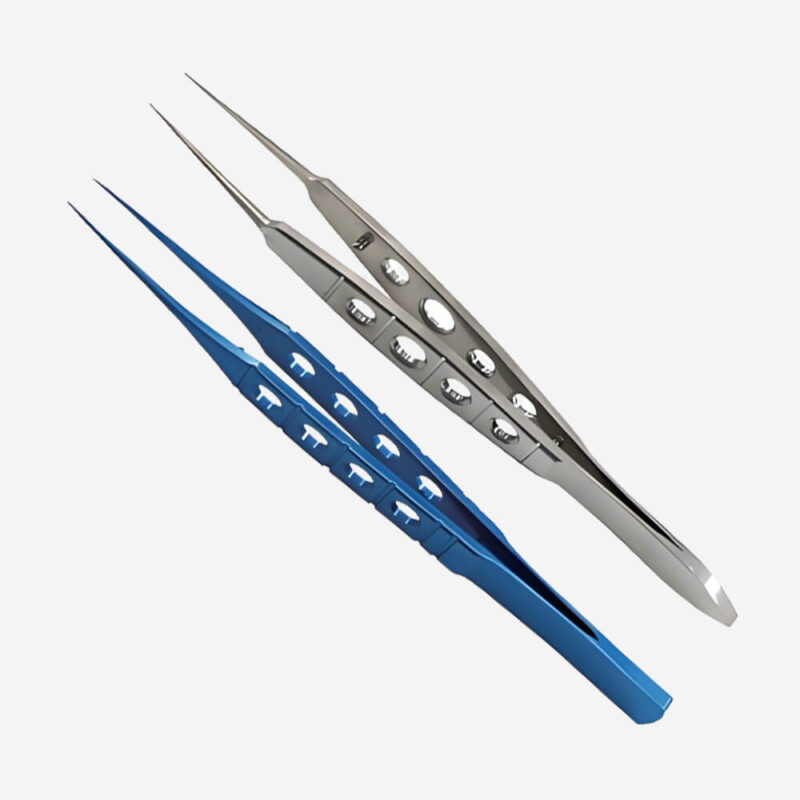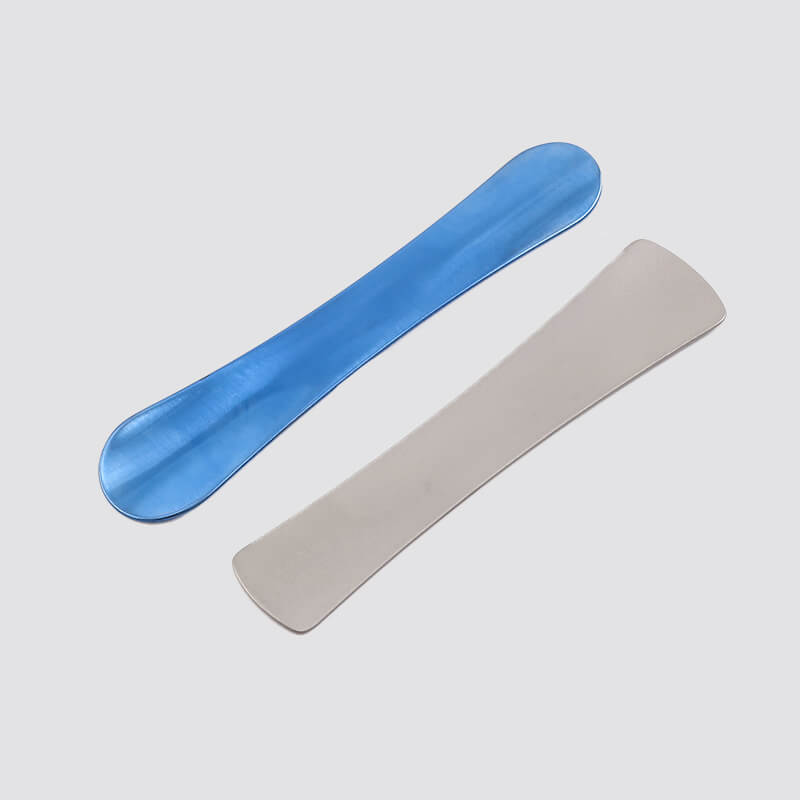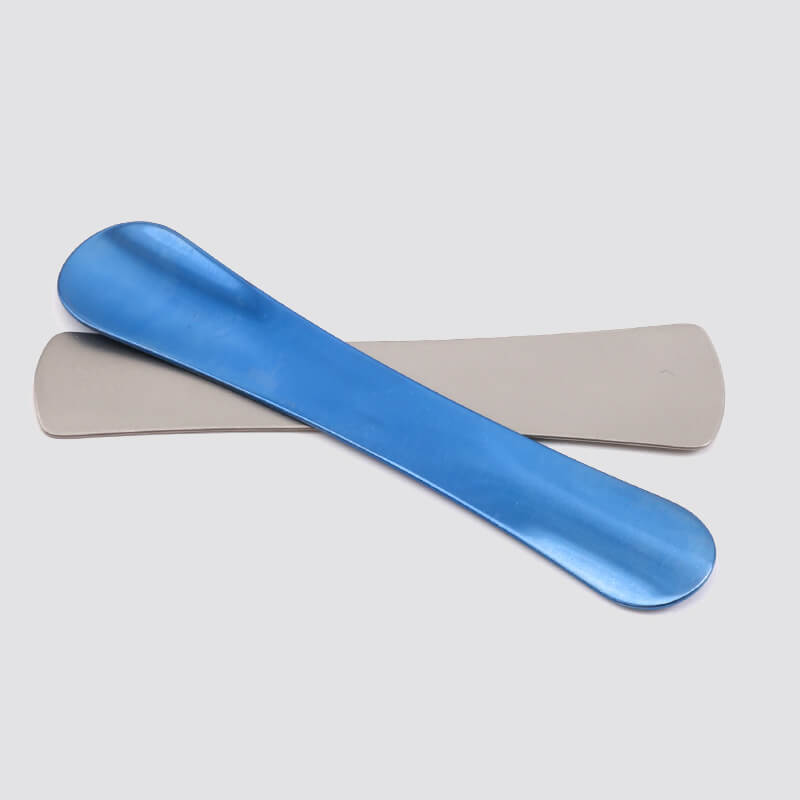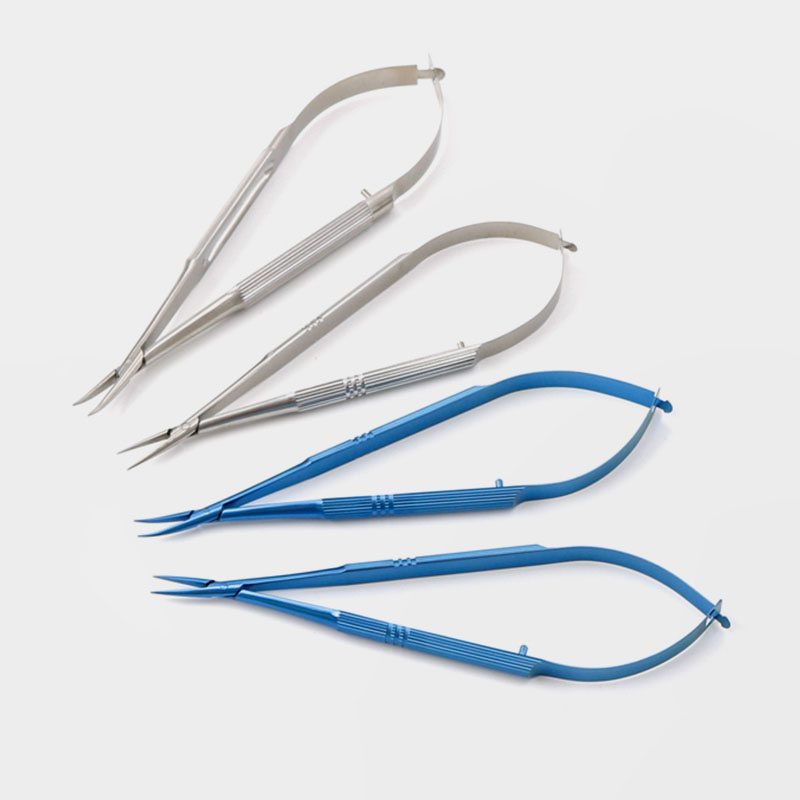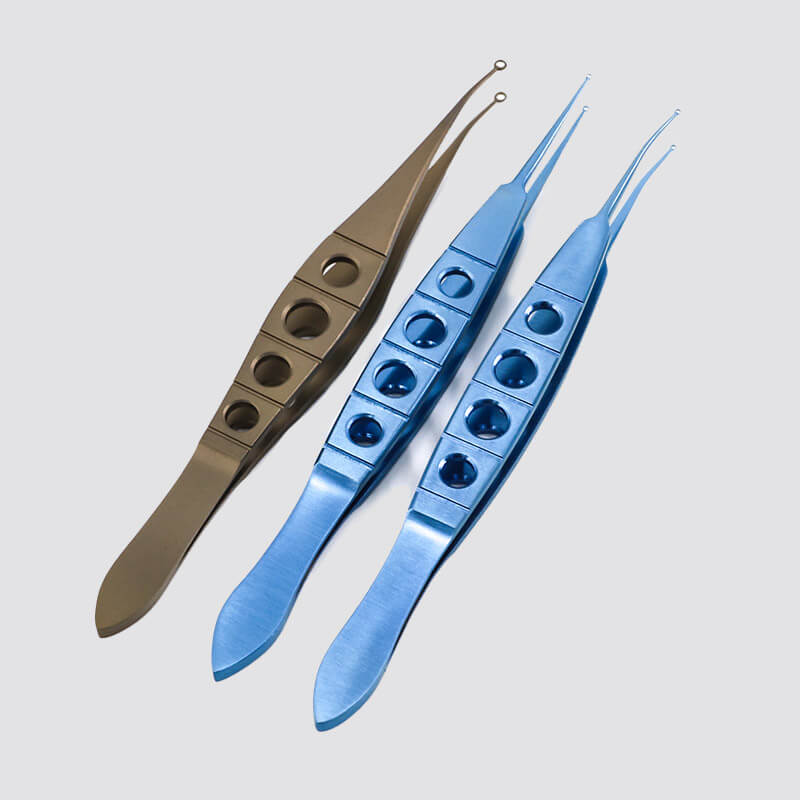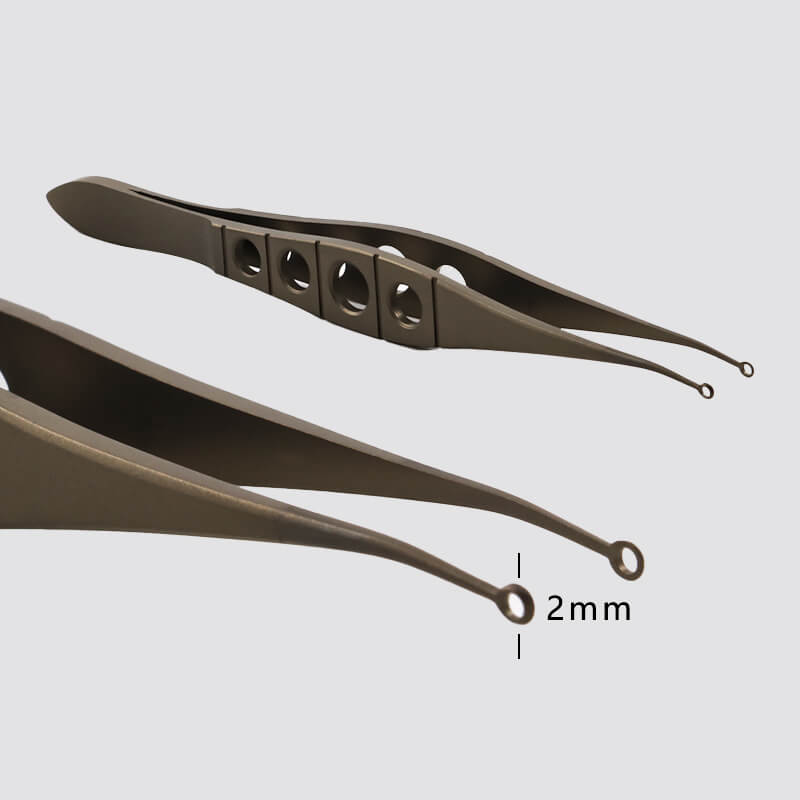What is Dressing Forceps?
Dressing forceps are a specialized tool for handling medical dressings, usually made of stainless steel or other corrosion-resistant materials. It is mainly used for handling dressings in a medical environment, such as cleaning wounds, changing dressings, cutting dressings, and other operations.
Dressing forceps is also known as non-toothed forceps or flat forceps, without hooks at the tip but with lip-head teeth. Belong to the basic surgical instruments, the tissue damage is small, shallow operation with short forceps, deep operation with long forceps, pointed flat forceps on the tissue damage is light for vascular, nerve surgery.
Holding Method of Dressing Forceps
The correct holding forceps for dressing forceps are with the thumb to the index and middle fingers, and the two straight forceps are feet in the middle and upper part.
Uses of dressing forceps
One of the most common uses of dressing forceps is to assist surgeons in handling sensitive and easily damaged tissues during operations. These delicate tissues include blood vessels, nerves, skin flaps, and internal organs such as the kidney or liver. Using their precise grip, dressing forceps can hold these structures firmly yet gently without slipping or causing any harm. This allows surgeons to perform intricate procedures with greater accuracy and reduces the risk of accidental tearing or cutting.
Apart from handling fragile tissues, dressing forceps also play a crucial role in suturing wounds. They are used to grasp suture needles while stitching up incisions or lacerations. The small teeth on their tips provide a secure grip on the needle and prevent it from slipping out of the surgeon’s hand while suturing. This is especially helpful when working with smaller needles that may be difficult to handle manually.
The use of dressing forceps is not limited to surgical settings only; they are also essential tools for wound care management. After cleaning a wound, dressings need to be applied to promote healing and prevent bacteria from entering. Dressing forceps aid in this process by securely picking up sterile gauze pads or bandages without touching them directly with hands that may carry harmful germs or bacteria.
Moreover, these versatile instruments are used for many other purposes apart from medical procedures. For instance, dentists use smaller versions of dressing forceps for placing cotton rolls into patients’ mouths during dental procedures to absorb saliva and control bleeding. Veterinary surgeons also utilize dressing forceps during animal surgeries to hold tissues and ligatures while performing various procedures.
Dressing forceps have a wide range of applications in the medical field. They are indispensable tools when it comes to handling fragile tissues during surgeries, suturing wounds, and managing dressings. Their versatility and accessibility make them an integral part of any medical setting, from hospitals to clinics to veterinarian offices. So the next time you see these seemingly small instruments being used in a medical procedure, remember their crucial role in ensuring successful outcomes for patients.
Composition of Dressing Forceps
1、Handle: The handle is the main part of the dressing forceps and is usually straight or curved and designed for holding and maneuvering. Handles are usually rounded or flat in design to provide comfort and grip stability. Some handles may also have a non-slip texture or rubberized sleeve for added grip stability and comfort.
2、Tip: The tip is the end portion of the dressing forceps and is usually a long, thin design to allow for precise gripping and handling of the dressing. The shape of the forceps tip can be straight, curved, or flat, depending on the application. Forceps tips are usually finely machined and polished to ensure a smooth surface to avoid damage to the skin or wound.
3、Joint: The joint is the part of the forceps that connects the handle to the forceps tip and is usually a movable hinged structure that allows free movement of the forceps tip in all directions and maintains a stable gripping force. Joints are usually composed of reliable mechanical structures to ensure long life and stable operational performance.
4、Locking Mechanism: Some dressing forceps may be equipped with a locking mechanism to hold the forceps tip in a specific position or to clamp the dressing to ensure precise and safe operation. The locking mechanism is usually a push-button or knob design that allows the user to quickly lock or unlock the forceps tip.
5、Material: Dressing forceps are usually made of stainless steel or other corrosion-resistant materials to ensure good durability and corrosion resistance. Some high-end medical dressing forceps may also be made of materials such as titanium alloys to increase their lightweight and durability.
Features of Dressing Forceps
- Precision: Medical dressing forceps are compactly designed with long, thin, and usually polished tips that provide a high degree of precision and control, enabling healthcare professionals to precisely pick up, move, and handle dressings.
- Versatility: Dressing forceps are suitable for a variety of medical operations, such as dressing changes, wound management, instrumentation during surgical procedures, and so on. Its versatility makes it an important auxiliary tool in medical work.
- Corrosion resistance: medical dressing forceps are usually made of stainless steel or other corrosion-resistant materials, with good corrosion resistance, can be used in a variety of medical environments for a long time without damage.
- Easy to Clean: The surface of medical dressing forceps is usually smooth and easy to clean, and can be cleaned through simple disinfection and sterilization procedures to ensure the sterility and safety of medical operations.
- Comfort: the handle of medical dressing forceps is ergonomically designed to provide a comfortable grip and maneuverability so that healthcare workers can use it for a long time without fatigue or discomfort.
- Reliability: medical dressing forceps are usually made of high-quality materials and precision manufacturing processes, with high reliability and stability, and can show good performance in various medical operations.
- Safety: medical dressing forceps are designed with safety in mind, the tips are usually smoothed to minimize damage to the skin and tissues, while some dressing forceps are also equipped with a locking device to ensure the stability and safety of clamping.
Application of Dressing forceps
Dressing change: Medical dressing forceps are commonly used for changing wound dressings, which can accurately hold and move dressings to ensure cleanliness around the wound and avoid direct hand contact with the wound, reducing the risk of infection.
Wound treatment: Medical dressing forceps can be used to deal with various types of wounds, such as cleaning, removing foreign bodies, suturing, and other operations, helping healthcare workers to carry out fine and accurate treatment.
Surgical operation: during surgery, medical dressing forceps are often used to clip, move, and operate surgical instruments, dressings, etc., to keep the surgical site clean and tidy and ensure the smooth progress of surgical operations.
Dermatological treatment: medical dressing forceps can also be used for dermatological treatment, such as removing warts, eczema, scabs, etc., to keep the skin clean and local treatment.
Oral health care: in the field of oral health care, medical dressing forceps can be used for clamping, moving dressings, instruments, etc. in the oral cavity, oral surgery or treatment operations.
Laboratory operations: medical dressing forceps are also commonly used in laboratory operations, such as in cell culture, biochemistry experiments, etc. to clamp and move samples or reagents.
How to use dressing forceps?
Preparation: Before using medical dressing forceps, first make sure that the forceps are clean, which can be sterilized by wiping them with sterilizing alcohol. It is also important to prepare any dressings or other materials that need to be used.
Clamping the dressing: Hold the dressing forceps firmly and gently clamp the dressing that needs to be changed or treated. When picking up the dressing, be careful to use moderate force to avoid damaging the wound or other tissues.
Moving the dressing: Use the dressing forceps to easily move the dressing and adjust its position to ensure that it covers the wound and remains clean.
Treating wounds: When treating wounds, you can use dressing forceps to remove foreign objects or scar tissue around the wound and keep it clean.
Surgical operation: during surgery, medical dressing forceps can be used for clamping, moving, and operating surgical instruments, dressings, etc., to help healthcare workers carry out fine and accurate surgical operations.
Cleaning and sterilizing: After using the medical dressing forceps, it should be cleaned, sterilized, and stored in time to ensure the hygiene of the next use.
Dressing Forceps Precautions
Sanitation and disinfection: It is important to ensure that medical dressing forceps are cleaned and disinfected before and after use. This can be achieved by wiping the forceps surface with sterilizing alcohol or by using specialized sterilization equipment. Keeping the forceps clean and sterilized effectively reduces the risk of cross-infection.
Appropriate force: When pinching dressings or treating wounds, it is important to control the force and avoid over- or under-exertion. Excessive force may result in injury or pain to the wound, while insufficient force may not allow the operation to be completed effectively.
Avoid cross-infection: Medical dressing forceps should avoid contact with other objects or surfaces when handling patients to prevent cross-infection from occurring. During use, try to avoid contact between forceps and non-clean surfaces and avoid placing used forceps on unsterilized surfaces.
Proper Storage: After using the dressing forceps, store them properly in a dry, clean, and sealed container to prevent contamination or damage. Avoid exposing the forceps to dust or debris to ensure hygiene and effectiveness for the next use.
Regular Inspection and Maintenance: Regularly check the condition of the dressing forceps to ensure that they are in good condition and working properly. If the forceps are found to be damaged or corroded, they should be replaced or repaired in time to ensure the accuracy and safety of the operation.
Professional training: It is very important for healthcare professionals to receive professional training. Before using medical tools such as dressing forceps, they should receive relevant training and guidance to ensure that the correct methods of use and precautions are mastered.
Dressing Forceps Maintenance
Cleaning and Disinfection: Medical dressing forceps should be cleaned and disinfected immediately after each use. The surface of the forceps can be cleaned with warm water and a neutral detergent and then wiped with sterilized alcohol. Ensure thorough cleaning and disinfection to prevent the occurrence of cross-infection.
Lubrication: Regularly add the proper amount of lubricant to the hinges and critical areas of the dressing forceps to ensure flexibility and smoothness. Choose a lubricant specifically designed for use with medical devices and follow the instructions in the manual.
Inspection and Adjustment: Regularly inspect the parts of the medical dressing forceps to make sure there is no looseness, damage, or rust. If problems are found, the damaged parts should be repaired or replaced in time to ensure the proper working of the forceps.
Storage: When not in use, dressing forceps should be stored in a dry, clean, and tightly sealed container to prevent damage to the forceps from dust, moisture, or debris. Avoid exposing forceps to sunlight or high temperatures.
Avoid Overuse: Avoid overuse of dressing forceps to minimize wear and tear and damage to the forceps. When using, control the strength and avoid excessive or frequent force to prolong the service life of forceps.
Regular Maintenance: It is recommended that medical dressing forceps be regularly sent to a professional medical device repair facility for thorough inspection and maintenance. They can clean, lubricate, and inspect the forceps more thoroughly and ensure that they meet health standards and safety requirements.

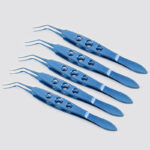 Capsulorhexis Forceps
Capsulorhexis Forceps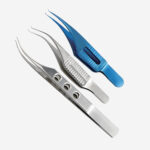 Suture Forceps
Suture Forceps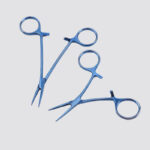 Hemostatic Forceps
Hemostatic Forceps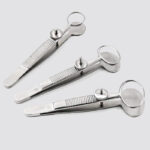 Chalazion Forceps
Chalazion Forceps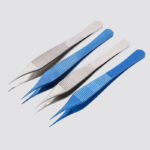 Adson Forceps
Adson Forceps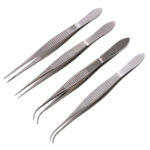 Tissue Forceps
Tissue Forceps



